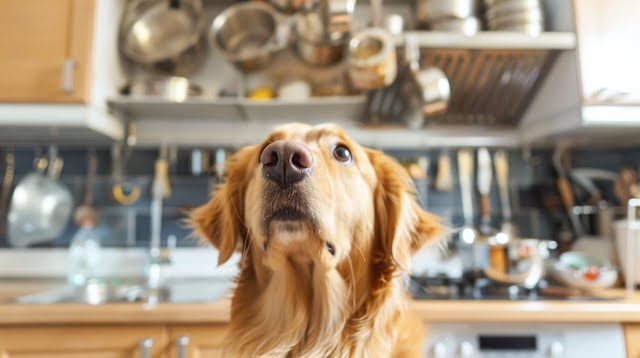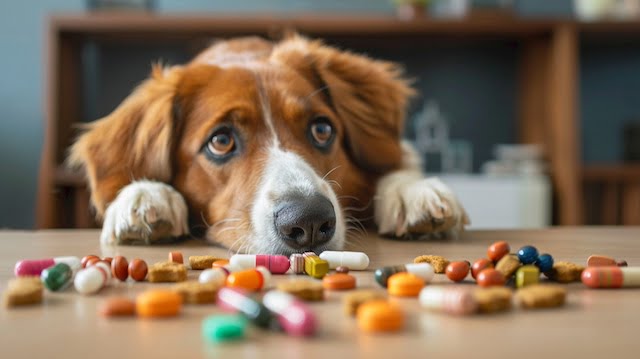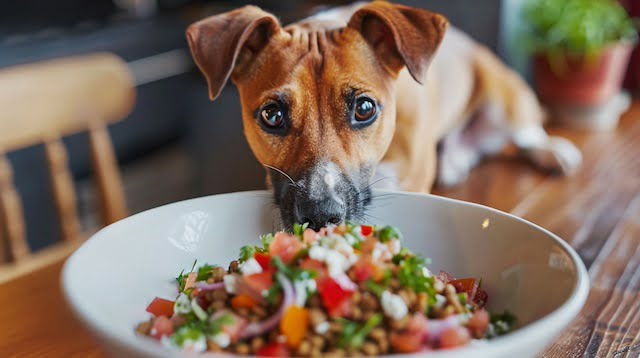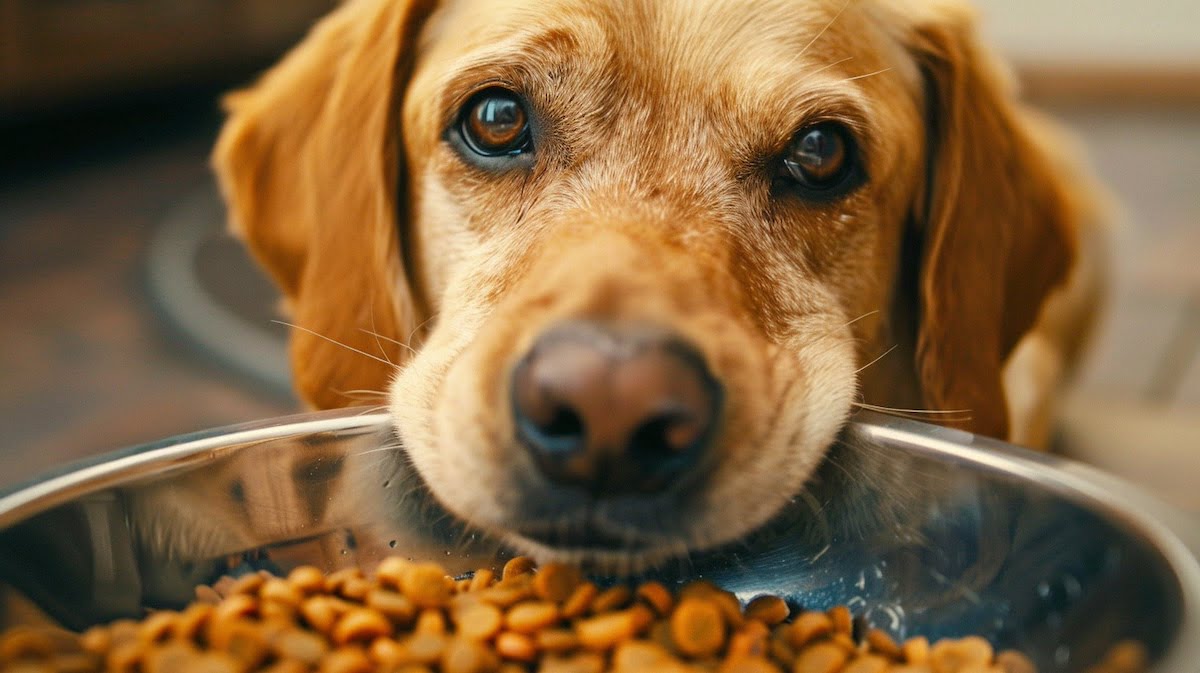Okay, let’s be honest. When you look at those adorable puppy eyes begging for a bite of your dinner, it’s tempting to think, “How hard can it be to make your own dog food? It’s probably cheaper too!” But hold on a minute, before you ditch the kibble and start cooking, there’s more to the story than meets the eye.
Sure, homemade dog food gives you total control over what goes into Fido’s bowl. It also means saying goodbye to mystery ingredients and worrying about recalls. But – and here’s the big but – is it truly the money-saving solution everyone thinks? Let’s break it down, looking at the pros, the cons, and the real costs involved, so you can decide what’s best for your dog and your wallet.
Decoding Homemade Dog Food
There are plenty of great reasons why dog owners decide to whip up their own puppy chow. Here are some of the big ones:
- You’re the Master Chef: With homemade, you know exactly what your dog is eating. No more deciphering weird ingredients on a dog food bag. Plus, you can avoid stuff your dog might be allergic to, because good luck finding kibble labeled “100% chicken-and-pumpkin-only!”
- Fresher is Better: Lots of people believe fresh, whole foods are just plain healthier than kibble, which is processed. And who wouldn’t want to feed their furry best friend the best, right?
- Picky Eaters Rejoice: Got a dog who turns their nose up at everything? Making your own food lets you tailor flavors and textures to make mealtime exciting again.
- The Savings Potential: This is the biggie, but the trick is, it’s not always a guarantee. We’ll dig into the dollars and cents soon.

The Recipe for Success
Before you start dreaming up gourmet dog dishes, there’s one super important thing to remember: dogs aren’t tiny humans with fur. They need a precise balance of nutrients that honestly, most of us don’t know off the top of our heads. That chicken and rice combo? Might lack some important stuff, leading to health problems down the road.
The secret to healthy homemade food? A vet-approved recipe! Your vet or a pet nutritionist can help you create a meal plan that’s nutritionally perfect for your pup’s age, size, and any health issues.
Beyond the Basics
Think making dog food is just about meat and veggies? Think again! Here are some surprising things to consider:
- Variety is Key: Just like us, dogs need different sources of protein, healthy fats, and good carbs. Think fish, eggs, and even organ meats (liver is packed with nutrients!).
- Supplements Might Be Needed: Depending on your recipe, your doggo might miss out on crucial vitamins and minerals – your vet can recommend what to add.Portion Control is
- Serious: Homemade food doesn’t have standardized calorie counts like kibble. You’ve got to calculate carefully to avoid an accidentally pudgy pup!
It’s crucial to understand that dogs need specific nutrients in the right amounts. Organizations like the Association of American Feed Control Officials (AAFCO) provide guidelines for balanced canine nutrition
The Hidden Costs of “Free” Food
So, you’re ready to swap Netflix nights for doggy dinner prep? Homemade food takes time, and that’s a cost not everyone thinks about:
- Shopping Ain’t Easy: Sourcing high-quality ingredients might mean trips to multiple stores, unlike grabbing a big bag of kibble.
- Chopping and Cooking: Meal prep isn’t just for humans. There’s washing, chopping, cooking, and batch-making to fit into your schedule.
- Cleanup Crew: All those extra dishes and containers won’t wash themselves!

Quality Comes at a Cost
You wouldn’t feed yourself the cheapest food on the shelf, would you? The same goes for your pup! Here’s where your budget might get stretched:
- Organic vs. Conventional: Going organic or buying from local farmers is awesome, but it often costs more.
- The Price of Protein: Meat, especially good quality meat, is a major expense in homemade dog food.
- Waste Factor: Unless you have a pack of dogs, some fresh ingredients may spoil before you use them all.
Your Kitchen Might Need an Upgrade
Making your own dog food might mean investing in some new gear:
- Food Scale: For accurate portions, because eyeballing it just won’t cut it!
- Bigger Storage: You’ll need space to store all those yummy ingredients and prepped meals. Freezer bags and containers add up.
- Heavy Duty Blender: Say hello to pureeing pumpkin, meats, and other goodies your pup needs.
The Hidden Expense – Nutritional Mistakes
This might be the costliest mistake of all. An improperly balanced homemade diet can lead to serious health problems for your dog. Think treating deficiencies or digestive issues caused by an unbalanced diet can be pricey. Nutritional mistakes in the long-term can even shorten your dog’s lifespan. That’s something no amount of money can fix.
While homemade dog food offers benefits, it’s crucial to get the nutritional balance right. Incorrectly formulated recipes can lead to deficiencies. It’s also important to understand that suddenly changing your dog’s diet can cause digestive upset.
When Does Homemade Truly Win?
Got a Great Dane or a Mastiff? Feeding those gentle giants premium kibble can get seriously expensive. Homemade food often works out cheaper, especially if you can source ingredients in bulk.
Solving Food Sensitivities
Does your dog have a sensitive stomach or allergies that make finding the right kibble a nightmare? Those special-diet foods cost a fortune! A vet-approved homemade plan might be both healthier AND more affordable.

Savvy Sourcing
Here’s where true bargain hunters shine in the world of homemade:
- Befriend Your Butcher: Odd cuts and organ meats are often surprisingly cheap and super nutritious for dogs.
- Farmers Markets and Bulk Stores: Build relationships with local farmers or check out bulk stores for better deals than supermarkets.
- Seasonal Smarts: Stock up on in-season fruits and veggies when they’re at their cheapest, freeze them, and your pup can enjoy them all year.
The Raw Deal
Love the idea of feeding your dog a diet closer to what their ancestors ate? This is niche, so let’s break it down:
- Potential Benefits: Advocates claim benefits like improved digestion, healthier coat, and even boosted immune system.
- Safety First: Raw diets come with risks! Consult your vet and do your research about safe handling to avoid foodborne illness for both you and your pup.
- Cost Factor: Can be surprisingly affordable if you source meats wisely, but factor in freezer costs for safe storage.
When Convenience Reigns Supreme
Sometimes, life gets in the way of homemade dog food. If you’re short on time or always on the go, kibble is a lifesaver. It’s fast, easy, and travel-friendly!

Choosing the Best Kibble
Not all kibble is the same! For a healthy, happy pup, focus on these things:
- Meat Matters: Look for kibble with whole meat as the first ingredient on the label. Avoid fillers!
- Do Your Research: Learn to understand dog food labels. Look for brands that use high-quality ingredients.
- Your Vet is Your Friend: Ask your vet for recommendations. They’ll help you find the right food for your dog’s needs and your budget.
Finding the Perfect Balance
Why stick to just one way of feeding your pup? Here’s how to add homemade goodness to store-bought kibble. The “Kibble Plus” approach offers a fantastic middle ground! Boost your pup’s kibble with healthy toppers like cooked veggies, yogurt, or bone broth for added flavor and nutrition. Whip up small batches of yummy homemade treats as a special reward. You can even bulk-buy meat when on sale, cook it up, and freeze portions to add some budget-friendly freshness to your dog’s kibble over time.

The Future of Pet Food? Personalized Nutrition
This trend is fascinating! Companies are popping up that create customized meal plans for dogs based on breed, size, activity level, and even allergies.
- Pros: Super convenient and takes the guesswork out of homemade nutrition.
- Cons: Can be expensive.
- Worth the Chat: Discuss personalized food options with your vet for more insights.
Conclusion
So, is homemade dog food cheaper? The answer, as with most things dog-related, is…it depends! There’s no single “perfect” diet. It’s about finding the best balance of nutrition, cost, convenience, and what makes your furry friend thrive.
Maybe you’ll go fully homemade with vet guidance. Maybe it’s high-quality kibble, or perhaps it’s a mix of both. The most important thing is that you’re making an informed decision, keeping your pup happy and healthy.
FAQs
Can I mix homemade dog food with kibble, or should I switch completely?
Mixing homemade with kibble is a great option! It adds fresh variety while maintaining convenience. Gradually introduce homemade portions to avoid digestive upset.
My dog is overweight – can homemade food help with weight management?
Absolutely! Homemade diets offer precise portion control and avoid unnecessary fillers. Consult your vet for a weight-loss meal plan.
Is homemade dog food safe for puppies? Do they have different nutritional needs?
Puppies need specific nutrients for growth and development. Homemade diets without vet guidance can be dangerous for them. Seek specialized advice.
How do I store homemade dog food safely, and how long does it last?
Refrigerated airtight containers keep homemade food fresh for 3-4 days. It can be frozen in portions for up to 6 months. Always thaw in the fridge.
Are there any human foods that I should NEVER include in homemade dog food?
Yes! Grapes, chocolate, onions, garlic, avocado, and some nuts are toxic to dogs. Always check a safe food list before cooking for your pup.

Healthy dogs mean happy dogs, and that makes me happy! I’m here to share all the tips for keeping your best furry friend in top shape, from puppyhood to their golden years.


